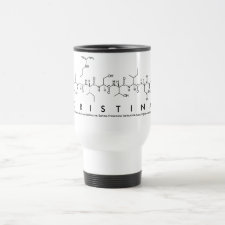
Authors: Baggiani C, Biagioli F, Anfossi L, Giovannoli C, Passini C, Giraudi G
Article Title: Effect of the mimic structure on the molecular recognition properties of molecularly imprinted polymers for ochratoxin A prepared by a fragmental approach.
Publication date: 2013
Journal: Reactive and Functional Polymers
Volume: 73
Issue: (6)
Page numbers: 833-837.
DOI: 10.1016/j.reactfunctpolym.2013.03.018
Alternative URL: http://www.sciencedirect.com/science/article/pii/S1381514813000783
Abstract: In this work the fragmental approach was used to prepare several molecularly imprinted ethylene dimethacrylate-co-methacrylic acid polymers with molecular recognition towards the mycotoxin ochratoxin A, with the aim of searching for simpler mimic templates than the well-known N-(4-chloro-1-hydroxy-2-naphthoylamido)-(l)-phenylalanine. The screening for binding of two different kinds of ochratoxin-related molecules was performed by HPLC analysis. Ochratoxin A and the mimic templates were eluted in acetonitrile-acetic acid (0.1% v/v) and the imprinting factor was measured for all the ligands on all the columns packed with the imprinted polymers. The experimental results show that changes to the amino acidic sub-structure or the presence/absence of a chlorine atom in position 4 on the naphthalene ring system does not affect the molecular recognition of ochratoxin A by the resulting imprinted polymer. On the contrary, the presence of the bulky naphthalene ring system in the mimic template seems to be necessary to preserve the molecular recognition of ochratoxin. This binding behavior was found to be compatible with in silico simulations of the complexation between some of the mimic templates and molecules of methacrylic acid. The use of the mimic template N-(1-hydroxy-2-naphthoylamido)-(L)-phenylalanine seems to represent a synthetically simple approach to the preparation of imprinted polymers with molecular recognition properties towards ochratoxin A
Template and target information: ochratoxin A, mimic template, N-(1-hydroxy-2-naphthoylamido)-(L)-phenylalanine
Author keywords: molecularly imprinted polymer, ochratoxin A, mimic template, mycotoxin, molecular recognition



Join the Society for Molecular Imprinting

New items RSS feed
Sign-up for e-mail updates:
Choose between receiving an occasional newsletter or more frequent e-mail alerts.
Click here to go to the sign-up page.
Is your name elemental or peptidic? Enter your name and find out by clicking either of the buttons below!
Other products you may like:
 MIPdatabase
MIPdatabase









